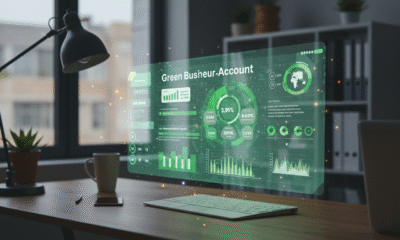The specter of global warming continues to be an existential threat to mother earth. To save the planet, businesses of all sizes need to lay and implement strategies that help reduce their carbon footprint. Many new entrepreneurs are specifically looking for green business ideas.
Plus, consumers are becoming aware of climate change and its effects. Sendle, a U.S. shipping company, reports that at least 75% of consumers have moderate to extreme concern about climate change, while 57% say climate change has pushed them to reassess their buying habits.
As more and more consumers start and continue to vote green with their wallets, brands that will ignore their customers’ sentiments are at risk.
Of course, it takes money to acquire sustainable business tools and pioneer an eco-friendly culture in your business. With the rise of fintech lenders, it’s become easier to obtain funding for small business.
Why should you make the transition to a green business? Her are some benefits:
- Rollback global warming: Climate change effects are bad for everyone, including your business. Reducing your carbon footprint helps roll back the specter of global warming.
- Win more customers: Environmentally-conscious consumers realize that what’s bad for mother earth isn’t good for them. Building a sustainable brand can help you win more loyal buyers.
- Brand reputation: Sustainability is a unique marketing strategy that can help your business gain recognition as a reputable, eco-friendly brand.
- Stand out of the pack: Transitioning to green business practices is a great way to differentiate yourself.
- Slash costs: Energy-efficient upgrades help you slash utility bills.
Best ideas to start this sustainable path
Work with green suppliers
How you source your products/services determines the impact of your business activities on the environment. Thus, working with manufacturers and suppliers who integrate sustainable business practices into their operations is the first step towards carbon-neutral.
Make sure the businesses you support have eco-friendly policies. Where possible, their products should be made from recyclable, renewable, and biodegradable materials that have little to no impact on the environment.
Use-eco friendly packaging
EPA estimates that containers and packaging contribute about 23% of landfill waste. If yours is a product-based business, you can effectively reduce your business’s carbon footprint by using sustainable packaging.
Biodegradable and reusable packaging materials like cardboard, degradable bubble wrap, recycled paper, and sustainable poly mailers are a great way to effect the change.
You can also liaise with packaging manufacturers to produce eco-friendly, custom branded packaging that helps elevate your brand experience.
Use energy-efficient gadgets
Making energy-efficient upgrades in the workplace not only makes your brand more sustainable but also helps shrink utility bills.
Let your staff use laptops instead of desktop computers that consume more power. Again, making simple changes like switching to energy-efficient office appliances, smart thermostats, LED lights, and automatic light sensors are some of the cost-effective ways to go green.
If you do not have enough resources to start, you can apply for one of the small business loans on the market, since taking this big step can be an initial investment.
Compost
Your business’s organic waste doesn’t have to end in landfills. In the dump, it decays slowly and releases destructive greenhouse gases, like methane.
Instead of taking lunch leftovers to the bin, you can develop a compost program for your business. In the compost, the same waste decays quickly, forming helpful soil for gardens and parks.
Reduce, reuse, recycle
Instead of office supplies that have a one-time use, you can reduce landfill waste with reusable alternatives.
For instance, glass and ceramic utensils are a great alternative to disposable plates, and cups, like coffee pods.
Again, encourage your employees to use both sides of the printer paper and reuse sturdy boxes in the warehouse instead of throwing them away.
Where you can’t reduce or reuse, make sure the trash can is emptied at nearby city bins so that waste can be recycled or disposed of responsibly.
Offer remote work
With the rise of the internet and work-from-home culture, not everyone has to drive to the office daily. Talk to your employees and let those who can work from home do so.
It means less time spent commuting and fewer cars on the road, hence less carbon dioxide emission into the air. That reduces your business’s overall carbon footprint.
With fewer employees in-house, you can reduce office space and save money on rent and other utility costs that go into lighting, heating, and stocking the workplace.
Fund your business operations sustainably
Finally, remember that you’ll need cash to go green. Making the change requires you to engineer a sustainable culture shift and install eco-friendly gadgets and business tools.
Sustainability should be at the center of your mind when accessing small business loans. Fintech lenders use advanced tech to process loans on the cloud, and their carbon footprint is almost zero.
Visit the link in the intro to see how small business loans can help you go carbon neutral.


 Environment10 months ago
Environment10 months agoAre Polymer Banknotes: an Eco-Friendly Trend or a Groundswell?

 Environment11 months ago
Environment11 months agoEco-Friendly Home Improvements: Top 7 Upgrades for 2025

 Features9 months ago
Features9 months agoEco-Friendly Cryptocurrencies: Sustainable Investment Choices

 Features10 months ago
Features10 months agoEco-Friendly Crypto Traders Must Find the Right Exchange































